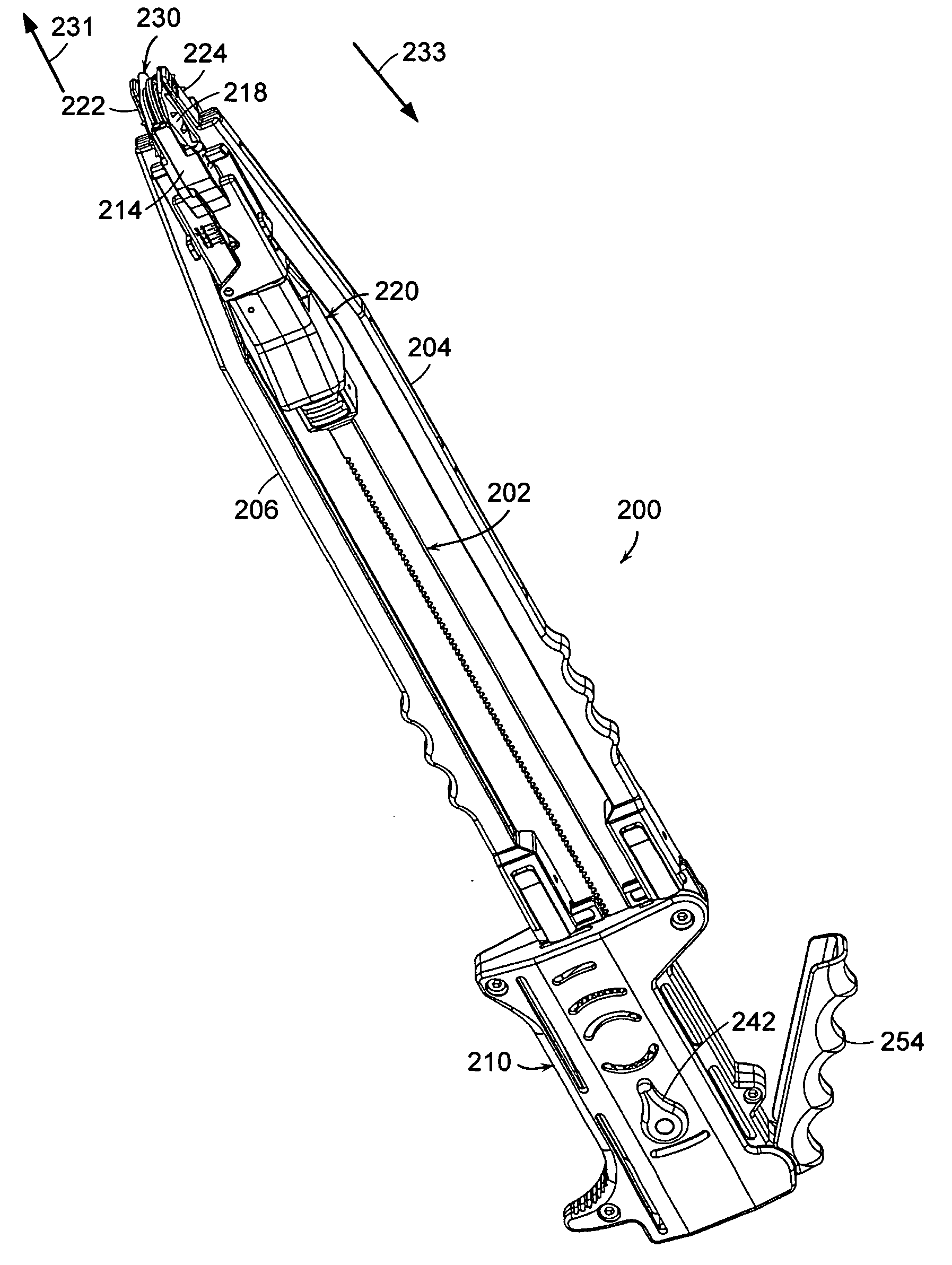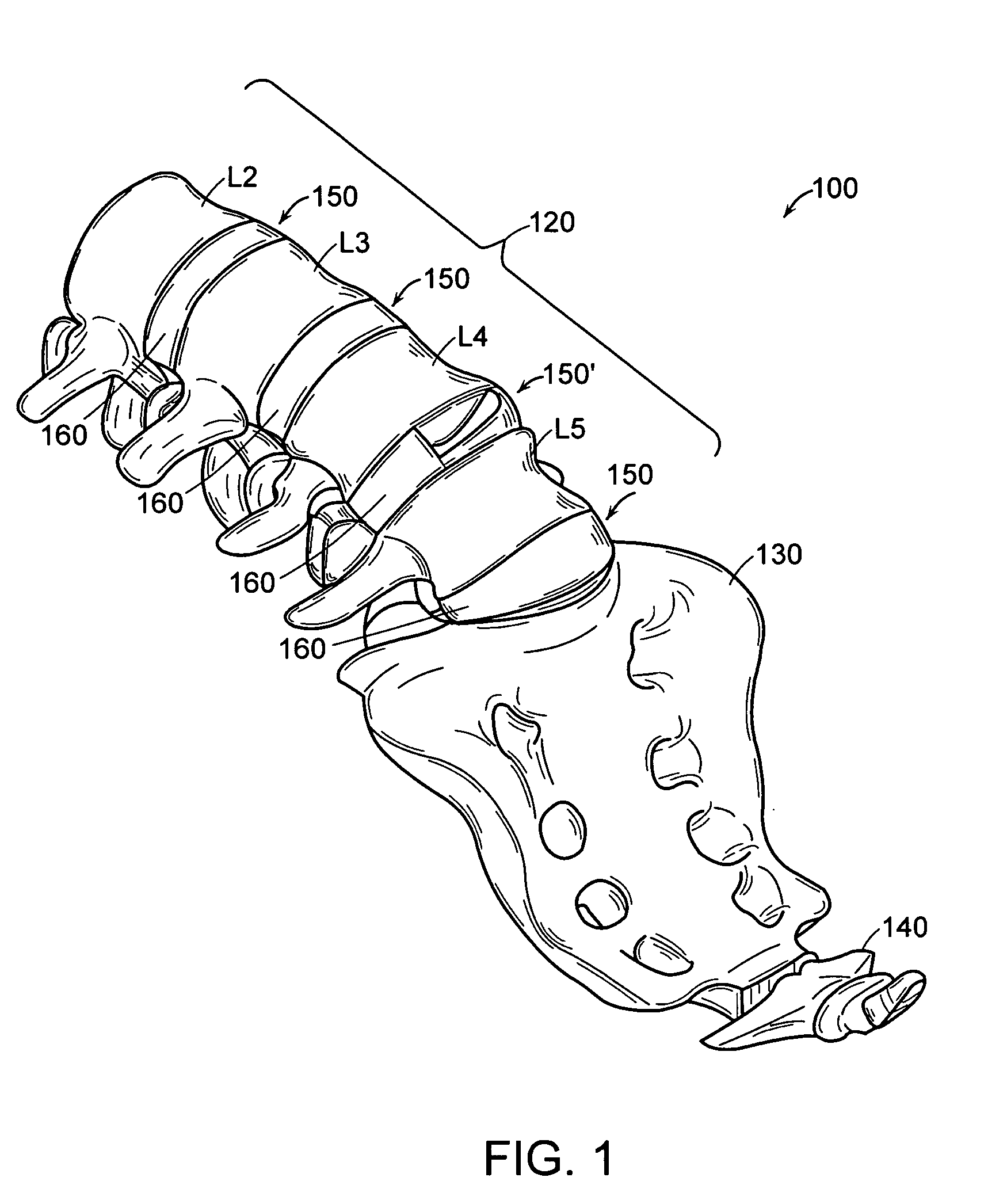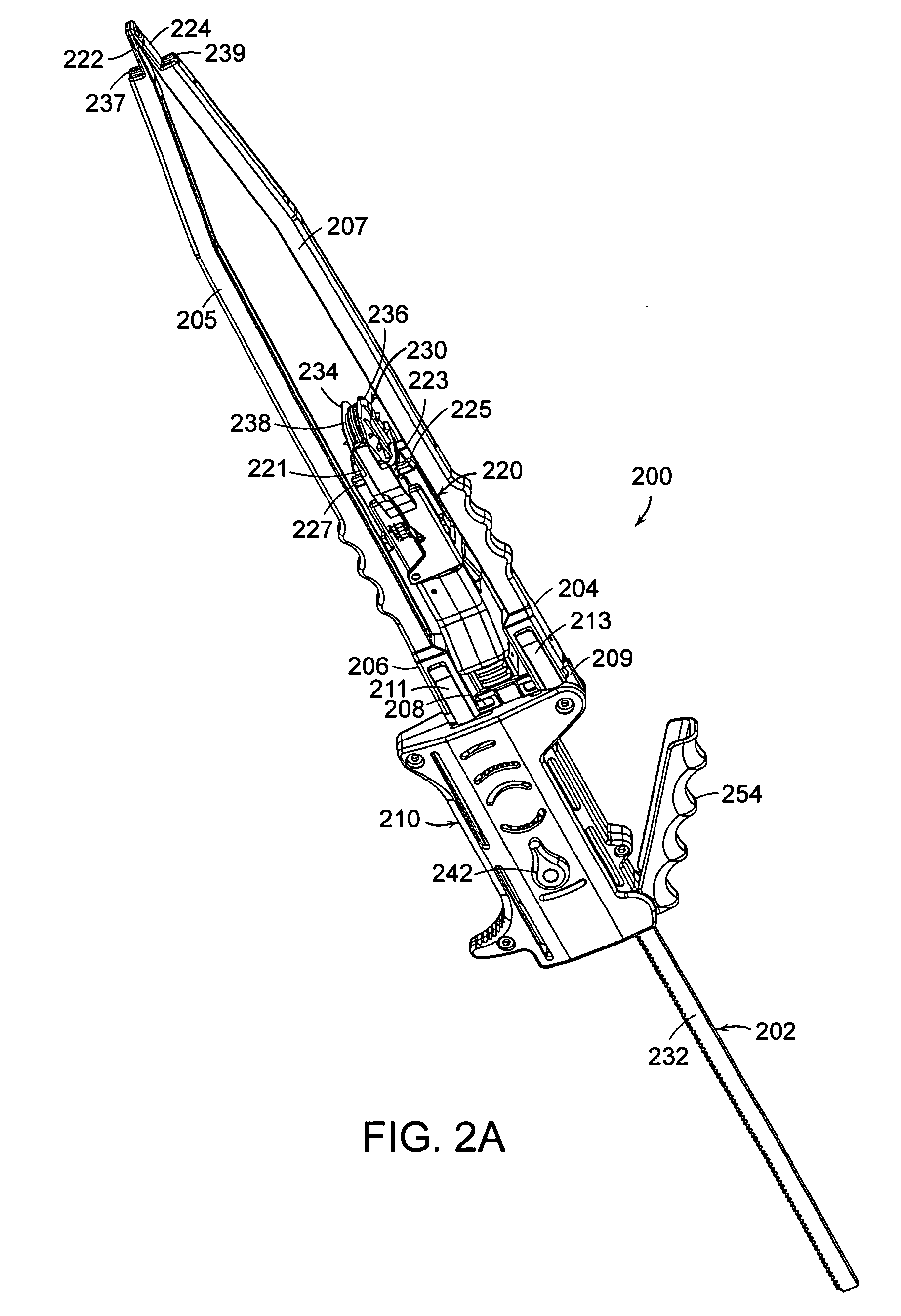Distraction instrument and method for distracting an intervertebral site
a technology of intervertebral site and dislocation device, which is applied in the field of dislocation instrument and dislocation device for dislocation of intervertebral site, to achieve the effects of reducing the amount of required impacts, reducing the potential for neural damage, and reducing the impaction of the spin
- Summary
- Abstract
- Description
- Claims
- Application Information
AI Technical Summary
Benefits of technology
Problems solved by technology
Method used
Image
Examples
first embodiment
[0048] In the distraction instrument of the present invention, shown in FIGS. 2A and 2B, distraction instrument 200 includes drive rod 202, distraction arms 204, 206 and driver mechanism 210. Driver mechanism 210 operates by a gear mechanism, meaning that the incremental actuating movements of the gears propel drive rod 202 towards or away from intervertebral site 150′ (FIG. 1). In turn, drive rod 202 moves linearly along an axis.
[0049]FIG. 2A shows distraction instrument 200 in a reduced position. FIG. 2B shows distraction instrument 200 in a distracted position. In both FIGS. 2A and 2B, drive rod 202 is coupled to implant holder 220, which holds artificial disc 230. Located between arms 204, 206 is drive rod 202. Implant holder 220 is a work piece that is put in motion to transport artificial disc 230 into intervertebral site 150′ (FIG. 1). Implant holder 220 is releasably coupled to both artificial disc 230 and drive rod 202, wherein artificial disc 230 is located at a distal end...
second embodiment
[0053] In a second embodiment, ratcheting gear mechanism 243, shown in FIGS. 4A and 4B, includes three wheel gears and two diametrically opposed straight gears 267, 268. The three wheel gears consist of two outer wheel gears 262, 266 and inner wheel gear 264. Each of the outer wheel gears are paired with one of the two straight gears, and only one outer wheel gear-straight gear pair is actuated depending on the mode of driver mechanism 210.
[0054] The mode of the ratcheting gear mechanism is controlled by switch 242. In one embodiment, shown in FIGS. 3C and 3D, there are two modes of operation: a driving mode and a free-floating mode. In another embodiment, shown in FIGS. 4A through 4D, the gear mechanism can have three modes of operation: a driving, a removal and a free-floating mode. When switch 242 is set in a driving mode or position, shown in FIGS. 4A and 4B, actuation of lever 254 engages straight gear 267 with outer wheel gear 266, whereby inner wheel gear 264 linearly moves d...
PUM
 Login to View More
Login to View More Abstract
Description
Claims
Application Information
 Login to View More
Login to View More - R&D
- Intellectual Property
- Life Sciences
- Materials
- Tech Scout
- Unparalleled Data Quality
- Higher Quality Content
- 60% Fewer Hallucinations
Browse by: Latest US Patents, China's latest patents, Technical Efficacy Thesaurus, Application Domain, Technology Topic, Popular Technical Reports.
© 2025 PatSnap. All rights reserved.Legal|Privacy policy|Modern Slavery Act Transparency Statement|Sitemap|About US| Contact US: help@patsnap.com



